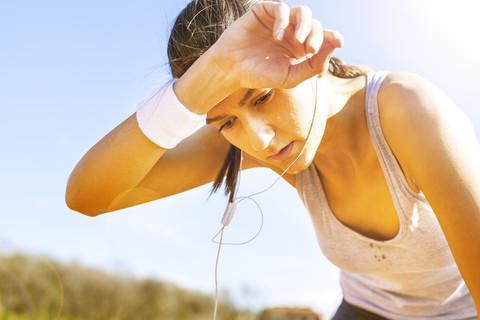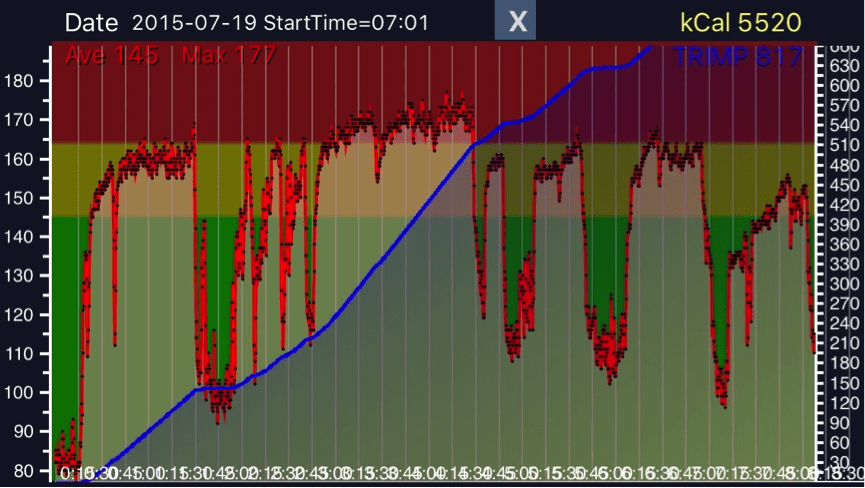As the temperature increases, how well you deal with the heat will play a significant role in determining your sporting performance. We shouldn’t get away from the fact that heat and sport or physical activity can be a dangerous combination. This month’s hot topic (literally) looks at why it’s crucial that athletes of all abilities adapt to the heat and more importantly how best to do it.
Exercising in the heat induces thermo-regulatory and other physiological strain that can lead to impairments in endurance exercise capacity (Racinals et al, 2015). This is certainly worth thinking about because exercising in the heat places the body under added stress, which can be sufficient to seriously dent your performance, especially during longer events. Brian Schwind, a regular contributor to ithlete found this out during the Ironman Coeur d’Alene event in June (read more here.). Fortunately, the human body can adapt to the stress of heat with repeated exposure, resulting in less strain and increased comfort. The bad news is that it takes time to develop this capacity, which means some consideration and planning is certainly required. So what can you do to give you the best chance of success combating the heat?

Acclimation/Acclimatisation
Whilst elite athletes have the luxury of sufficient preparation time for events in hot conditions, for those that do not it’s certainly worth allotting extra time to acclimatize to the heat to avoid any illnesses or injury to yourself. However if time is tight and you’re in a high state of fitness, as little as five days of acclimatisation may be sufficient for good adaptation to the heat. On the other hand, recreational athletes will require longer for acclimatisation – at least seven and up to 14 days is recommended.
Heat acclimation or acclimatisation plays a huge part in the body’s physical responses and its overall ability to cope with heat exposure. Heat acclimation is a broad term that can be loosely defined as a complex series of changes or adaptations that occur in response to heat stress in a controlled environment. These adaptations are not only beneficial but also crucial for exercising in the heat, which allow the body to better cope with heat stress. Heat acclimatization describes the same process, but happens in a natural environment. In either case, the positive adaptations that occur include reductions in:
- Heart rate
- Body temperature responses
- Skin temperature responses
- Perceived exertion
As well as increases in:
- Sweat rate
- Sweat onset (sweating starts earlier)
- Heart function/blood distribution
- Overall ability to perform in the heat
Effects on Heart Rate Variability
The impact heat has on heart rate variability (HRV) has been well documented. According to Stauss et al (2009), the combination of heat stress and exercise causes greater cardiovascular impairment than heat stress alone, even with the same increase in temperature and shorter overall exposure to heat stress.
Simon Wegerif, Creator of ithlete knows all too well the affects of heat stress on the body and shares his experience below:
I learned the hard way just how unpleasant heat stress can be this summer when I did the Etape du Tour stage of the Tour de France in record temperatures. As the chart shows below, during the extended climbs, my heart rate also climbed and was well into the red zone during the Col du Glandon (a monster at the best of times). By the time I was half way up the final climb to La Toussuire, my Garmin read 41C and I was ready to give in to the pervasive nausea and dizziness. Very fortunately, I noticed an animal drinking trough at the side of the road, and once the existing two (non-animal) occupants had got out, I immersed my head & shoulders in the water for as long as I could, and almost immediately started to feel better. After 10 mins I was ready to restart. You can see this point directly under the ‘l’ of kCal on the chart, and might notice that my HR was 30 bpm lower than when I had stopped. I can now understand why elite athletes frequently wear ice jackets before time trails in hot conditions. My HR did start climbing again, but luckily did not reach into the red again before I hit the finish.

Not an experience I would care to repeat, and next time I do something like this I will try to arrive at least 3 days beforehand so as to give my body a chance to acclimatize!
